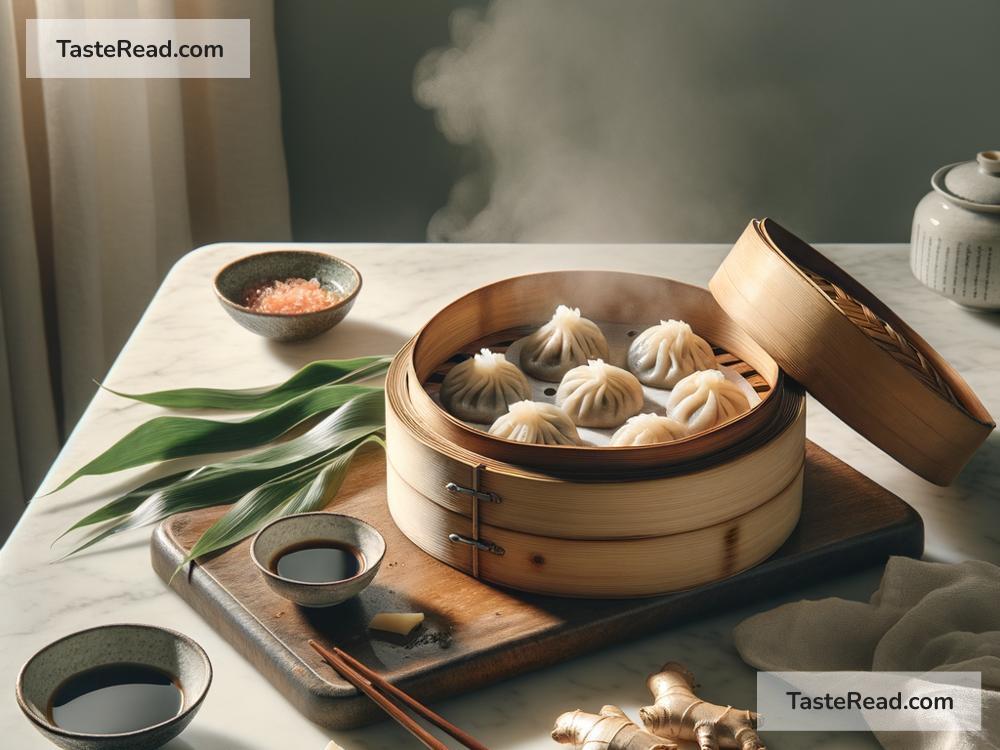How to Achieve Perfectly Steamed Dim Sum and Dumplings
Are you craving some steamed dim sum and dumplings but don’t know how to achieve that restaurant-quality taste and texture? Fear not, because making these tasty treats at home can be quite simple once you know the tricks of the trade. In this article, we’ll guide you through the steps required to steam dim sum and dumplings to perfection, using simple English so even novice cooks can follow along.
What You Need
Before we dive into the cooking process, let’s ensure you have everything you need. Here’s a basic list:
- Bamboo steamer: This traditional steaming tool is essential for achieving authentic taste and texture. You can find one at most Asian markets or online.
- Wok or large pot: The vessel in which you’ll place the bamboo steamer.
- Parchment paper: To prevent sticking and allow steam to circulate.
- Dim sum or dumplings: Whether homemade or store-bought, have these ready to go. If you’re making them from scratch, there are plenty of simple recipes online.
Step 1: Prepare Your Steamer
First things first, let’s get your bamboo steamer ready. If it’s brand new, give it a quick rinse with water. Cut parchment paper to fit the bottoms of the steamer trays. Some people like to make little holes in the parchment paper to allow steam to circulate better, but this is optional. The idea is to prevent the dumplings from sticking and picking up the bamboo pattern.
Step 2: Water Setup
Fill your wok or pot with enough water so that it doesn’t touch the bottom of the steamer when it sits atop the vessel. You’re looking for about 1-2 inches of water, depending on the size of your setup. Make sure there’s enough water for a steaming session of about 20-30 minutes, but also take care not to overfill.
Step 3: Arranging the Dumplings
This step is crucial. You don’t want your dim sum or dumplings to become soggy or stick together. Place them on the parchment paper within your steamer tray, ensuring there’s a bit of space between each. They will expand slightly and puff up as they cook, so this space is vital for avoiding a dumpling disaster.
Step 4: The Steaming Process
Now, let’s get cooking. With the water in the wok or pot at a rolling boil, place your bamboo steamer on top. The vital thing here is to maintain a consistent boil without it being too vigorous. Too much vigor in the boiling water can cause water to splash up or sway the dumplings, potentially making them soggy.
Cover the steamer with its lid and let the magic happen. Steaming times will vary depending on the size and filling of your dumplings or dim sum, but a good rule of thumb is about 10-12 minutes for most types. For larger or meat-filled dumplings, you may need to extend this time by a few minutes.
Step 5: Checking for Doneness
After about 10 minutes, take a peek. The wrapper should be translucent, and the fillings cooked through. If unsure, you can take one out and do a taste test. Just be careful as they will be very hot straight from the steamer.
Step 6: Serving Hot
Once your dumplings are cooked, remove them carefully from the steamer and serve immediately. Dim sum and dumplings are best enjoyed while hot and fresh from the steamer. Feel free to pair them with your favorite dipping sauce for an added flavor boost.
Tips for Success
- Don’t rush: Allow the dumplings to steam properly; don’t try to hurry the process by increasing the heat.
- Keep an eye on water levels: Depending on how long you’re steaming, you may need to add more water to the pot. Do this carefully to avoid burns or affecting the steaming temperature.
- Leftovers: If you have steamed dumplings left over, they can be refrigerated and reheated. Although they are best enjoyed fresh, you can rejuvenate them by steaming again for a few minutes.
Conclusion
Achieving perfectly steamed dim sum and dumplings at home is quite straightforward if you follow these steps. Whether you’re making them from scratch or cooking store-bought ones, the satisfaction of lifting the lid of your bamboo steamer to reveal a batch of perfectly cooked dumplings is unmatched. So, why not give it a try and bring a taste of authentic Asian cuisine into your kitchen? Happy steaming!


